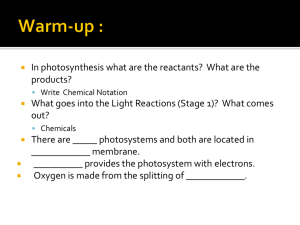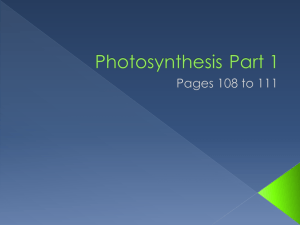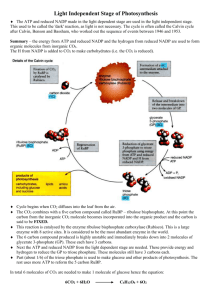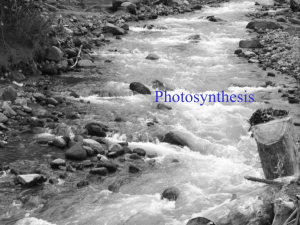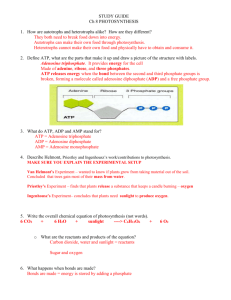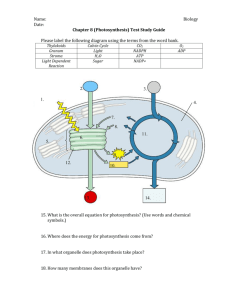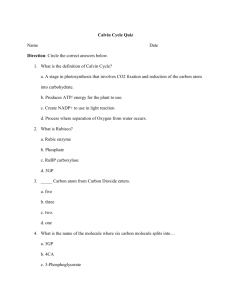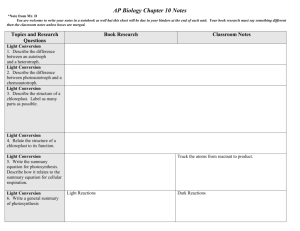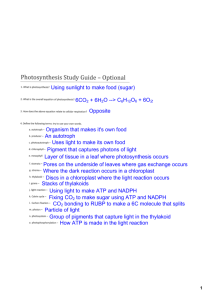Photosynthesis Tutorial
advertisement
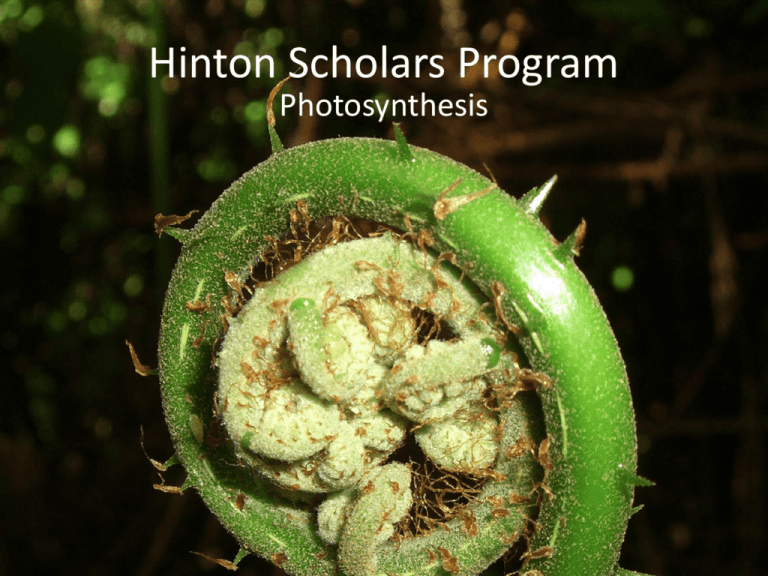
Hinton Scholars Program Photosynthesis Fig. 10-5-1 H2O Light NADP+ ADP + P Light Reactions Chloroplast i Fig. 10-5-2 H2O Light NADP+ ADP + P i Light Reactions ATP NADPH Chloroplast O2 Fig. 10-5-3 CO2 H2O Light NADP+ ADP + P i Light Reactions ATP NADPH Chloroplast O2 Calvin Cycle Fig. 10-5-4 CO2 H2O Light NADP+ ADP + P i Light Reactions Calvin Cycle ATP NADPH Chloroplast O2 [CH2O] (sugar) Evolution of Chloroplasts and Mitochondria Why are most (but not all) plants green? Violet and Blue are best transmitted through clear water. http://commons.wikimedia.org/wiki/File:Dew_on_green_Plant.jpg http://en.wikipedia.org/wiki/Chloroplast http://www.pion.cz/en/article/electromagnetic-spectrum Fig. 10-18-1 Stomata What are stomata? What do they do? Beginning of the Calvin Cycle! http://www.hisse.net/forum/showthread.php?t=26901&page=11 Fig. 10-19 C4 Plants The C4 pathway Mesophyll cell PEP hydroxylase binds to CO2 more strongly than rubisco. It will even bind CO2 at low concentrations. These steps are isolated into different cells/compartments. 3C 4C Bundlesheath cell CO2 PEP carboxylase 3C CO2 Calvin Cycle Sugar Vascular tissue http://www.hisse.net/forum/showthread.php?t=26901&page=11 Fig. 10-20 CAM Plants Stomata are closed during the day, but open at night to let in CO2. These steps are temporally separated. http://www.hisse.net/forum/showthread.php?t=26901&page=11 Fig. 10-18-3 Input 3 CO2 (Entering one at a time) Phase 1: Carbon fixation Rubisco 3 P Short-lived intermediate 3 P Ribulose bisphosphate (RuBP) P 6 P 3-Phosphoglycerate P 6 ATP 6 ADP 3 ADP 3 Calvin Cycle 6 P P 1,3-Bisphosphoglycerate ATP 6 NADPH Phase 3: Regeneration of the CO2 acceptor (RuBP) 6 NADP+ 6 Pi P 5 G3P 6 P Glyceraldehyde-3-phosphate (G3P) 1 Output P G3P (a sugar) Glucose and other organic compounds Phase 2: Reduction
